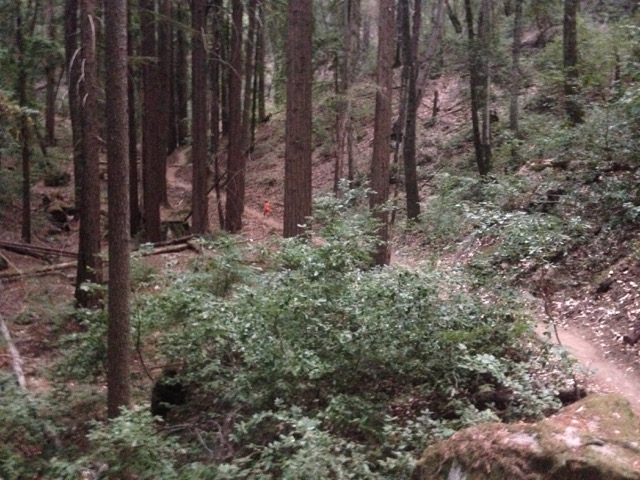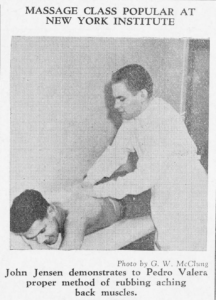Read more about this in Men Without Fear, available at Amazon.
At age 19, John Jensen was injured while wrestling, and the injury led to glaucoma, which took away what little of his vision remained, caused him a great deal of discomfort, and robbed him of the balance, agility, and speed that made him a remarkable wrestler.
In the summer before his senior year, J.J. was to get a cornea transplant to save his remaining eye. The night before his appointment, he awoke to find everything dark. He felt a lamp, and it was hot. The next day, the doctor determined there was too much pressure on the eye to perform the transplant. This traumatic episode set John back as a wrestler, though he continued to wrestle competitively. He attended an Olympic trial in San Francisco [1], but the glaucoma degraded his performance, as it would throughout the year to come. He tried to rehabilitate but he couldn’t get it all back. John’s days as “the Bull” were over.
John had been almost entirely blind since he was three, when diphtheria nearly killed him, took one of his eyes, and nearly took the other. As a boy, he could see very fuzzy shapes within a couple feet of his face. It was only good for detecting the presence of light. Now a man, his blindness was complete, though he could still “see” large objects by using passive echolocation (he didn’t ping for echo).
© 2015 Kaweah
. . . . . . . . . . . . . . . . . . . .
[1] Probably in spring 1944. Fred Tarrant confirms that the trials were in San Francisco. There were no Olympic games in 1944, but it appears that trials were held. Fred was too ill to compete. John managed to make the trip, but he was ill and did poorly. Fred says the illness in this case was John’s glaucoma.


